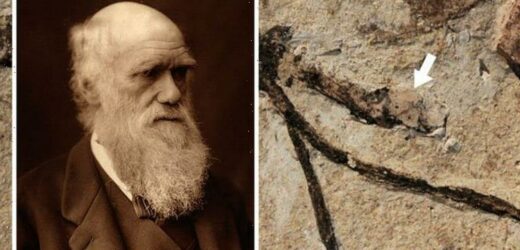Charles Darwin: Scientist explains origin of life theory
We use your sign-up to provide content in ways you’ve consented to and to improve our understanding of you. This may include adverts from us and 3rd parties based on our understanding. You can unsubscribe at any time. More info
Experts in China have announced they found the oldest flower bud in the fossil record. It could be the final puzzle piece in proving flowering plants, or angiosperms, evolved tens of millions of years earlier than initially thought. The team hopes their discovery will help “ease the pain” around the mystery that Darwin called “abominable”.
The evolution expert was baffled as to how plants had evolved so quickly if the oldest unambiguous fossil flower is no older than 130 million years old.
Darwin never found the answer to his burning question, but over the last few years, scientists have started putting the pieces together.
In 2016, scientists in China announced the discovery of a “perfect flower” dating back to the Jurassic, more than 145 million years ago.
The fossilised plant, called Euanthus, not only had petals, but it also had sepals, as well as male and female reproductive parts, including an ovary similar to modern flowers.


Two years later, another fossilised flower was found in China, and this one, called Nanjinganthus, was about 174 million years old.
It held similarities to modern flowers as its seeds were completely enclosed in an ovary.
Some at the time, however, argued they were not true angiosperms.
This is because they sent they were too primitive to be considered flowers.
The new fossilised flower bud, found in China and dubbed Florigerminis jurassica, could be the transitional stage researchers have been looking for.

It was found at a deposit dated more than 164 million years ago and is in excellent condition.
The plant’s stem is connected not only to a flower bud but also to a fruit and a leafy branch – a trio of data that is especially rare
Because flowers are such delicate structures they are notoriously difficult to find in fossils.
Previous attempts to uncover the origin of flowering plants have been described as an “unbroken record of failure”.
F. jurassica is a one-of-a-kind discovery and early examination points to it being an early angiosperm.
The authors, who published their study in Geological Society, London, Special Publications, say their results demand a “rethinking of angiosperm evolution”.
DON’T MISS:
Scientists discover new approach to beat antibiotic-resistant bacteria [REVEAL]
Archaeologists amazed at ‘totally unbroken’ Roman settlement [INSIGHT]
Solar storm warning: Earth to be battered this weekend [SPOTLIGHT]


Darwin is best known for his contributions to the science of evolution.
His proposition that all species of life have descended from common ancestors is now widely accepted and considered a fundamental concept in science.
In a joint publication with Alfred Russel Wallace, he introduced his scientific theory that this branching pattern of evolution resulted from a process that he called natural selection.
This theory is that e struggle for existence has a similar effect to the artificial selection involved in selective breeding.
Darwin has been described as one of the most influential figures in human history and he was honoured by burial in Westminster Abbey.
Source: Read Full Article


